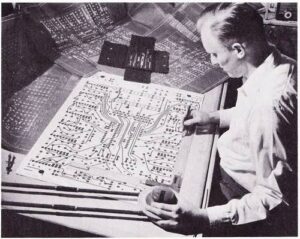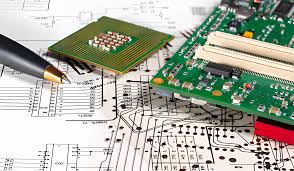As a qualified and excellent PCB design engineer, it is not enough just to learn to pull wires, everyone needs to enrich their knowledge base while learning various PCB design knowledge. In this article, we share with you 6 tips related to PCB, come and see what you know!
Who invented the PCB?
The creator of the PCB was the Austrian Paul eisler, who first used printed circuit boards in radios in 1936. in 1943, Americans mostly used the technology in military radios, and in 1948, the US officially recognized the invention for commercial use. It was only since the mid-1950s that printed circuit boards have been widely used.
PCBs are ubiquitous and widely used in communication, medical, industrial control, automotive, military, aviation, aerospace, consumer and other industrial products. In all types of electronic products, PCBs play an important and integral role as the main component of the product hardware.
Why is the PCB green?
A careful eye may find that most PCBs are green (there are fewer black, blue, red, and other colors), why is that? In fact, the PCB itself is brown in color, and the green we see is the solder mask. The solder mask is not always green, there are red, yellow, blue, purple, black, etc., but green is the most common.
There are several main arguments as to why a green solder resist layer is used:
1) Green is less irritating to the eyes. Since childhood, teachers have told us that green is good for the eyes, protects the eyes and resists fatigue. Production and maintenance personnel are less likely to suffer from eye fatigue when staring at PCBs for long periods of time doing their jobs, which is less harmful to the eyes.
2) Lower cost. Since green is the mainstream in the production process, naturally green paint will be purchased in larger quantities and the purchase cost of green paint will be somewhat lower compared to other colors. Also using the same color of paint in high volume production can reduce the cost of changing lines.
3) When the board is soldered in SMT, it has to go through the tin and post and the final AOI calibration, these processes are to be optically positioned and calibrated, and having a green background color is better for the recognition of the instrument.
How was the PCB designed?
To manufacture a PCB, the layout of the PCB must first be designed. PCB design relies on EDA design software tools and platforms such as Cadence Allegro, Mentor EE, Mentor Pads, Altium Designer, Protel, etc.
The basic flow of PCB design is: Preliminary preparation → PCB structure design → PCB layout design → PCB constraint setting and wiring design → Wiring optimization and silkscreen placement → Network DRC check and structure check → PCB manufacturing.
What are the white printed lines on the PCB?
We often see white printed lines on PCBs, have you ever wondered what they are? These white lines are actually used to mark components and put important PCB information on the board, called “screen printing”. It can be screen printed on the board or printed on the PCB with an inkjet printer.
What are the components on the PCB?
There are many individual components on a PCB, each with a different function, which together make up the overall function of the PCB. components on a PCB include resistors, potentiometers, capacitors, inductors, relays, batteries, fuses, transformers, diodes, transistors, LEDs, switches, and more.
Are there any wires on the PCB?
Beginners may not know that PCBs don’t actually use wires for connections. This is interesting because most electrical devices and technologies require connections with wires. instead of wires, PCBs use copper alignments to draw current throughout the device and connect all components.















